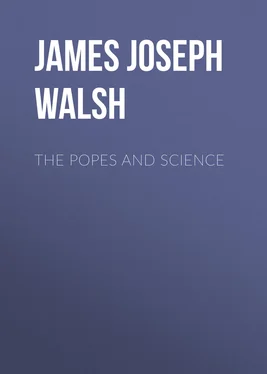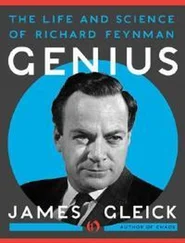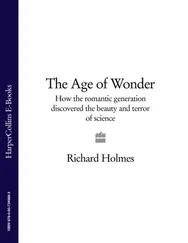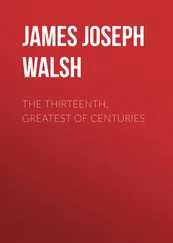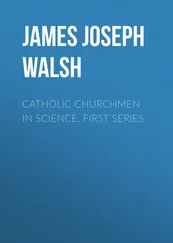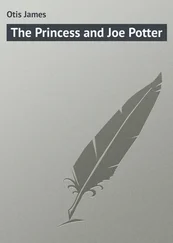James Walsh - The Popes and Science
Здесь есть возможность читать онлайн «James Walsh - The Popes and Science» — ознакомительный отрывок электронной книги совершенно бесплатно, а после прочтения отрывка купить полную версию. В некоторых случаях можно слушать аудио, скачать через торрент в формате fb2 и присутствует краткое содержание. Жанр: foreign_prose, foreign_religion, foreign_antique, на английском языке. Описание произведения, (предисловие) а так же отзывы посетителей доступны на портале библиотеки ЛибКат.
- Название:The Popes and Science
- Автор:
- Жанр:
- Год:неизвестен
- ISBN:нет данных
- Рейтинг книги:4 / 5. Голосов: 1
-
Избранное:Добавить в избранное
- Отзывы:
-
Ваша оценка:
- 80
- 1
- 2
- 3
- 4
- 5
The Popes and Science: краткое содержание, описание и аннотация
Предлагаем к чтению аннотацию, описание, краткое содержание или предисловие (зависит от того, что написал сам автор книги «The Popes and Science»). Если вы не нашли необходимую информацию о книге — напишите в комментариях, мы постараемся отыскать её.
The Popes and Science — читать онлайн ознакомительный отрывок
Ниже представлен текст книги, разбитый по страницам. Система сохранения места последней прочитанной страницы, позволяет с удобством читать онлайн бесплатно книгу «The Popes and Science», без необходимости каждый раз заново искать на чём Вы остановились. Поставьте закладку, и сможете в любой момент перейти на страницу, на которой закончили чтение.
Интервал:
Закладка:
The reputation of the University of Paris is such that we should not expect her to be backward in this important department of education. As a matter of fact, there is abundant evidence of dissection having been carried on here at the end of the thirteenth century, and the practice was not interrupted at the beginning of the fourteenth century. Lanfranc, the famous surgeon who had studied with William of Salicet in Italy (we have already mentioned both of them and we shall have much to say of them hereafter), taught surgery from a very practical standpoint in Paris, and illustrated his teachings by means of dissections. Lanfranc was succeeded in Paris by Mondeville, whose name is also associated with the practice of dissection by most historians of medicine, and whose teaching was of such a practical character that there can be no doubt that he must have employed this valuable adjunct in his surgical training of students. In general, however, the records of dissecting work and of anatomical development are not near so satisfactory at Paris as in the Italian universities. As is the case in our own day and has always been true, universities were inclined to specialties in the Middle Ages, and the specialty of Paris was Philosophy and Theology. This was choice, however, not compulsion, any more than similar conditions in our own time. The medical school continued to be in spite of this one of the best in the world, though it was not famous for its original work, except in surgery, which is, however, the subject most nearly related to anatomy and the one whose development would seem necessarily to demand attention to anatomy.
With the Renaissance, which is usually said to begin after the fall of Constantinople in 1453, and the consequent dispersion of Greek scholars throughout Italy, a new spirit entered into anatomy as into every other department of intellectual life at this time. The reason for it is not easy to explain. Perhaps the spread of Greek texts with regard to medicine inspired students and teachers to try out their problems for themselves, and so a new impetus was given to anatomical investigation. Whatever it was that caused it, the new movement came unhampered by the Church, and Italy continued to be even to a greater degree than before the Mecca for medical students who wished to do original work in anatomy. During the last fifty years of the fifteenth century anatomy began its modern phase, and original work of a very high order was accomplished. There are five names that deserve to be mentioned in this period. They are Gabriele Zerbi, Achillini, Berengar of Carpi, Matthew of Gradi and Benivieni. Each of these men did work that was epoch-making in anatomy, and each has a place in the history of the science that will never be lost.
Zerbi, who did his work at Verona, traced the olfactory nerves and describes the nerve supply of the special senses more completely than it had ever been done before. After his time it was only a question of filling in the details of this subject. Achillini added much to our knowledge of the anatomy of the head, being the first to describe the small bones of the ear and also to recognize the orifices of Wharton's ducts. Besides this, which would have been quite enough to have given him a place in the history of anatomy, he added important details to what had been previously known with regard to the intestines, and described very clearly the ileocecal valve and suggested its function. Matthew of Gradi, or De Gradibus, was the first, according to Professor Turner in his article on Anatomy in the Encyclopaedia Britannica, who represented the ovaries in the correct light as regards their anatomical relations and their function.
The most important of these fifteenth century investigators in pure anatomy, however, is Berengarius or Berengar of Carpi, who did his work at Bologna at the end of the fifteenth and the beginning of the sixteenth century. His commentaries on Mondino's work show how much he added to that great teacher's instruction. If he had no other distinction than that of having been the first to undertake a systematic view of the several textures of which the body is composed, it would have been sufficient to stamp him as a great original worker in anatomy. He treats successively of the anatomical characters and properties of fat, of membrane in general, of flesh, of nerve, of villus or fibre, of ligament, of sinew or tendon, and of muscle in general. Almost needless to say, he must have made many dissections to obtain such clear details of information, and, as we shall see, he probably did make many hundreds. If he had done nothing else but be the first to mention the vermiform appendix, it would have been quite sufficient to give him a distinction in our day. Everything that he touched, however, he illuminated. His anatomy of the fetus was excellent. He was the first to note that the chest of the male was larger than in the female, while the capacity of the female pelvis was in the opposite ratio. In the larynx he discovered the two arytenoid cartilages. He recognized the opening of the common biliary duct, and was the first to give a good description of the thymus gland. All this, it must be remembered, before the end of the second decade of the sixteenth century, that is, almost before Vesalius was born.
Berengar's work was done at Bologna. Some five years before his death Bologna became a Papal city. There is no sign, however, that this change in the political fortunes of the city made any difference in Berengar's application to his favorite studies in anatomy. As we shall see in the chapter on The Papal Medical School, already the Popes were laying the foundations of their own great medical school in Rome, in which anatomy was to be cultivated above all the other sciences, so that there would be no reason to expect from other sources of historical knowledge any interruption of Berengar's work, and it did not come.
A fifth great student of anatomy during the fifteenth century was Benivieni, who has been neglected in the ordinary histories of anatomy because his work concerned itself almost exclusively with pathological, not with normal anatomy. In our increasing interest in pathology during the nineteenth century, he has very properly come in for his due share of attention. Professor Allbutt, in his address on the Historical Relations of Medicine and Surgery down to the Sixteenth Century, declares that Benivieni should be revered as the forerunner of Morgagni and as one of the greatest physicians of the late Middle Ages. Benivieni's life occupies almost exactly the second half of the fifteenth century, as he was born probably in 1448, and died in 1502. Allbutt says:–
"He was not a professor, but an eminent practitioner in Florence, at a period when, in spite of its Platonism, Florence on the whole was doing most for science; for as Bologna turned to law, Padua turned to humanism and philosophy. He was one of those fresh and independent observers who, like Mondeville, was oppressed by the authority neither of Arab nor Greek."
We are not interested, however, at the present time in what he accomplished for surgery, though there are a number of features of his work, including the crushing of stone in the bladder and his puncture of the hymen for retained menses, as well as his methods of division and slow extension of the cicatricial contractions resulting from burns near the elbow, which place him among the most ingenious and original of surgical thinkers. It is his interest in dissection that commends him to us here. He must have done a very great number of autopsies.
His interest in the causes of disease was so great that he seems to have taken every possible opportunity to search out changes in organs which would account for symptoms that he had observed. His place in anatomy and the history of pathology has not been properly appreciated in this matter, and Professor Allbutt claims for him the title of Father of Pathology, rather than for those to whom it has been given, and demands for his work done in Florence during the second half of the fifteenth century the credit of laying the real foundation-stones of the great science of pathological anatomy. Unfortunately, he died comparatively young and without having had time properly to publish his own contributions to medical science. Professor Allbutt says:–
Читать дальшеИнтервал:
Закладка:
Похожие книги на «The Popes and Science»
Представляем Вашему вниманию похожие книги на «The Popes and Science» списком для выбора. Мы отобрали схожую по названию и смыслу литературу в надежде предоставить читателям больше вариантов отыскать новые, интересные, ещё непрочитанные произведения.
Обсуждение, отзывы о книге «The Popes and Science» и просто собственные мнения читателей. Оставьте ваши комментарии, напишите, что Вы думаете о произведении, его смысле или главных героях. Укажите что конкретно понравилось, а что нет, и почему Вы так считаете.
